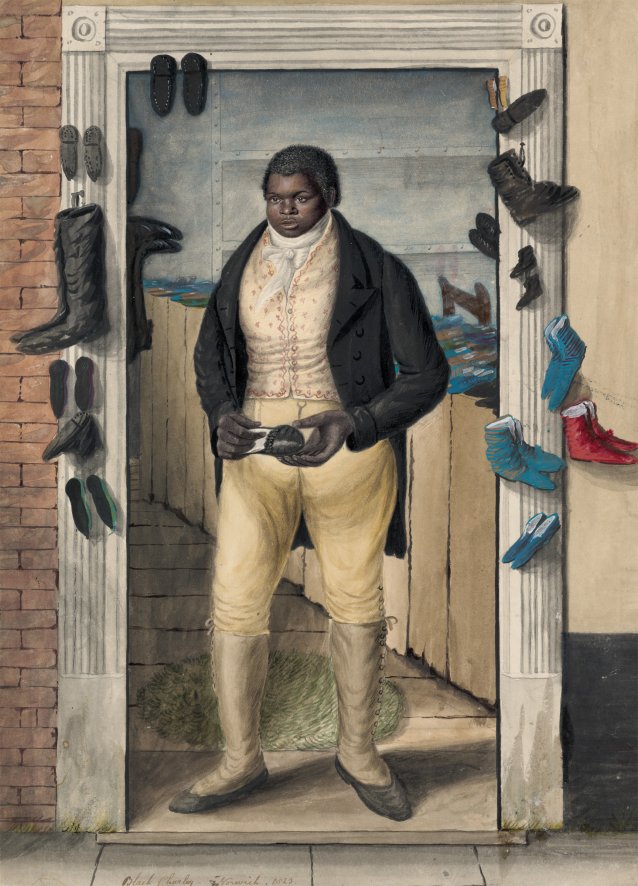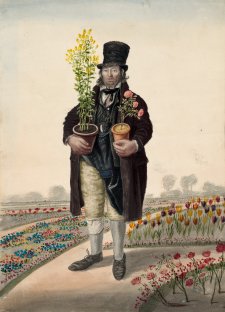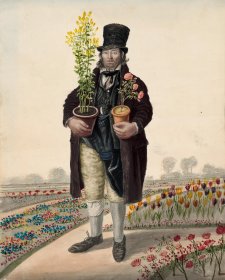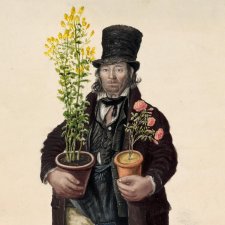In the multiracial, multicultural context of contemporary Britain, Norfolk appears quite stubbornly Anglo-Saxon. In the 2011 census, more than 92 per cent of the population identified as ‘White British’, while just 9,000 (1.1 per cent) described themselves as ‘Black (African or Caribbean)’ or ‘Mixed (White and Black African/Caribbean)’.
This is nothing new. Although the former slave Ukawsaw Gronniosaw or James Albert worked as a weaver there in the 1760s, for much of the 19th century the only recorded, visible black presence in the county town of Norwich was the African being scrubbed by two ‘sturdy wenches, with mops’ on the inn sign of the ‘Labour in Vain’.
It is, therefore, perhaps the more surprising to find that two of Dempsey’s three Afro-British subjects are from Norwich: ‘Black Charley’ the boot and shoemaker, and a street vendor of haberdashery nicknamed ‘Cotton’.
Charley is particularly remarkable by virtue of his evident economic success and social respectability. He is not one of Dempsey’s usual street hawkers, but a skilled tradesman working in his own premises. Charley is depicted standing at the entrance to his shop, in a doorway of classic late- Georgian pattern (with reeded pilasters and lintel, and corner roundels) such as can still be found in Norwich today — in Elm Hill, for example. Inside the shop is a circular or oval rush floor rug (like those being sold by Mary Croker, Dempsey’s Colchester mat woman) and a bench covered with shoes. Other footwear hangs from nails or hooks in the door frame, and Charley holds a new or part-finished shoe in his hands. In the late-18th century, Norwich’s woollen-worsted market declined significantly and, despite the introduction of new fabrics such as silk, crepe and bombazine, the local hand-weaving industry never recovered its former strength. Over the next half-century, industrial bootmaking began to fill the gap, eventually becoming the dominant force in the local manufacturing economy.
Although the Parliamentary Army had been supplied with off-the-shelf boots as early as the 1640s, it was only towards the end of the 18th century that traditional tailored footwear began to be replaced by ready-made shoes in different sizes. Standardisation of patterns, sizes and techniques permitted the industrial division of labour and, even before the establishment of factories in the mid-19th century, many of the processes of shoemaking were controlled by a single proprietor, but farmed out to numerous journeymen or pieceworkers.
It is not clear whether Charley is a maker working for another, or selfemployed, or indeed a ‘garret-master’ himself, though the proprietorial stance, the garland of shoes around him and the quality of his dress — embroidered waistcoat, carefully tied neckcloth, frock coat — all testify to professional success.
‘Cotton’, on the other hand, with his basket of buttons and ribbons and reels of cotton at ‘two for a penny’ is the smallest of small retailers, barely one step above the match-seller. Yet he, too, like Charley, appears something of a dandy; while the overcoat is ragged and top hat battered, the white waistcoat and high stock collar, and the languid lean against a bollard speak of a high degree of self-possession.
Collection: Tasmanian Museum and Art Gallery, presented by C. Docker, 1956
















